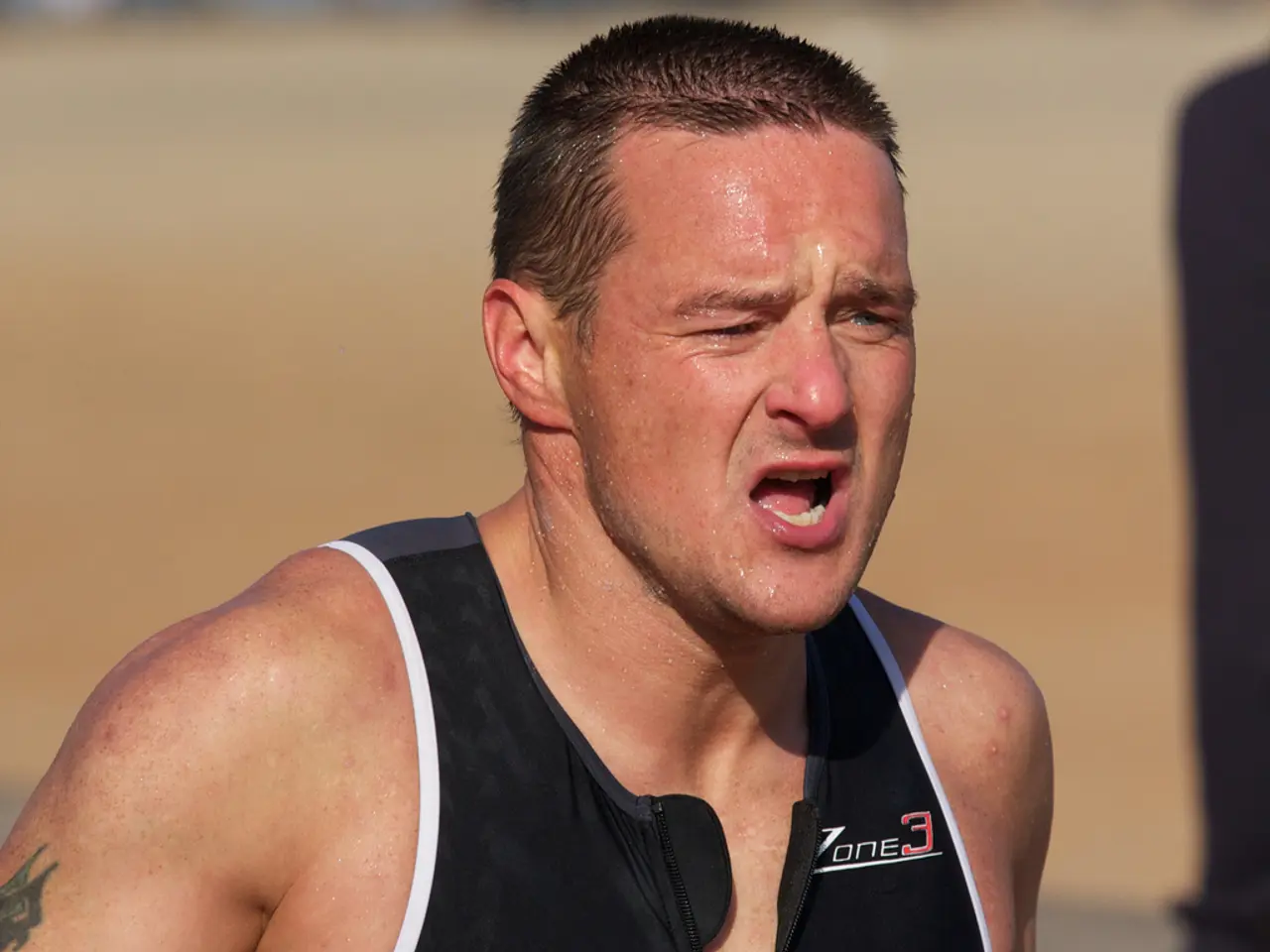Unbearable heat conditions persist in sports spectacles: 'Enough is enough'
In the realm of recreational and professional sports, extreme heat conditions pose significant health risks for athletes. These risks, which range from heat cramps to life-threatening heat stroke, arise due to the body's struggle to regulate temperature during intense exercise in hot environments. This leads to dehydration, electrolyte imbalances, and organ stress.
To combat these risks, event organizers and athletes can employ a series of coordinated strategies. Sports physician Hans-Georg Predel, who heads the Institute for Circulatory Research and Sports Medicine at the German Sports University Cologne, suggests several measures.
Adjust Timing and Intensity
Scheduling practices and competitions during cooler parts of the day, such as early morning or late evening, and reducing workout intensity while athletes acclimate to heat over 10-14 days can help mitigate the risks.
Hydration Management
Encouraging athletes to drink water proactively, about a cup every 15-20 minutes, even without feeling thirsty, and avoiding sugary, caffeinated, or alcoholic drinks is crucial.
Acclimatization
Gradually increasing exposure and physical load in the heat can help the body adapt physiologically, reducing the risk of heat illness.
Clothing and Equipment
Using lightweight, breathable, and light-colored clothing, as well as reducing or modifying heavy gear and pads, can help athletes stay cool.
Frequent Rest and Cooling
Planning regular breaks every 15-20 minutes for rest in shaded or cool areas, and employing cooling methods such as cold water immersion, ice packs, cold towels, fans, or misting, can help athletes maintain their body temperature.
Monitoring and Preparedness
Using heat stress monitoring tools like Wet Bulb Globe Temperature (WBGT) to guide activity modification and implementing heat illness prevention protocols, ensuring medical professionals are present, and having emergency plans ready, including access to cold-water immersion tubs, are essential.
Education
Coaches, trainers, and athletes should be trained to recognize early signs of heat cramps, heat exhaustion, and heat stroke and respond promptly to prevent progression.
Specific populations at greater risk include football linemen, younger athletes with developing heat regulation, and those with preexisting medical conditions or low fitness levels.
Major sports organizations should develop dynamic guidelines and indices that set a clear limit for extreme heat conditions, according to Predel. He also considers the increasing occurrence of sports events in extreme temperature conditions as a responsibility of sports associations.
Recent events such as the Swimming World Championships and the Hockey Europeans, held in temperatures above 30 degrees and 35 degrees respectively, have raised concerns about the exploitation of athlete's health for media and commercial reasons, as Predel suggests. The risks are high, even for elite athletes who are pushing their limits, with the "fine line" between "just about manageable" and "unmanageable" being crossed at the swimming World Championships.
By combining these measures—environmental adjustments, athlete preparation, active monitoring, and emergency readiness—event organizers and athletes can greatly reduce the health risks posed by extreme heat during sports activities.
The Commission has also been consulted on the draft directive on the protection of workers from the risks related to exposure to ionizing radiation in the context of the growing concern over climate change and its impact on health-and-wellness. Meanwhile, within the realm of environmental science, understanding the effects of extreme temperatures on various ecosystems, including aquatic life during the Swimming World Championships and terrestrial life during the Hockey Europeans, is imperative for climate-change mitigation efforts.
Sports and science intertwine in the pursuit of reducing mental-health risks associated with athletic competition. For instance, dealing with stressors like performance anxiety and post-competition depression requires a comprehensive approach that incorporates fitness-and-exercise routines, improved nutrition, and mental health support services.
Pursuing a career in sports doesn't only necessitate physical fitness, but also a strong background in different science fields—from sports medicine to environmental science. This not only equips athletes with the tools to navigate the challenges of modern sports nutrition and performance optimization, but also enhances their overall understanding of the environmental impacts of their chosen profession.
In light of these considerations, it's crucial for both amateur and professional athletes to approach sports not just as a physical activity, but as a holistic journey that encompasses health-and-wellness, mental health, and understanding the broader environmental implications of their choices.




